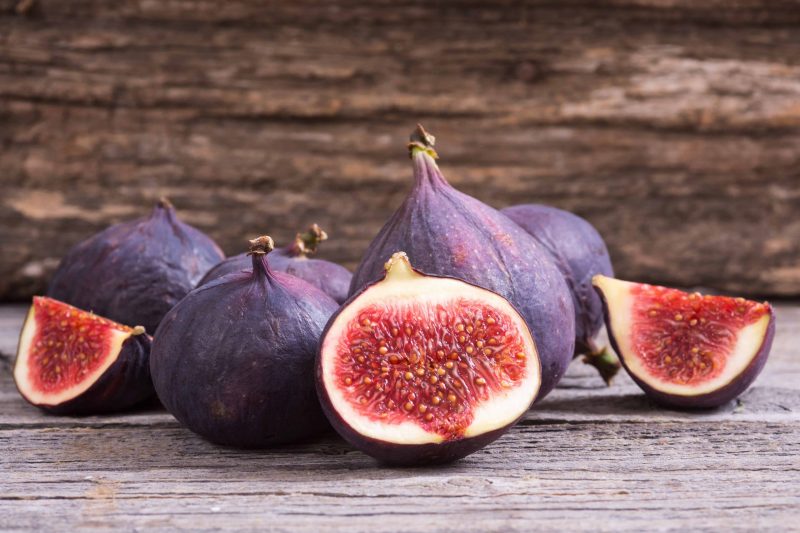
The Fig is a sweet-tasting fruit that many people often enjoy as part of a snack or as a dessert. However, others have not even been encouraged to integrate it into their diet because they are unaware of its benefits.
Below we will tell you about the benefits of figs and other information of interest so you are encouraged to eat them more regularly in your diet. Take note!
Contents
The nutritional value of the Fig
According to the experts of the Association, five a day, like the banana, the Fig is a fruit rich in carbohydrates. Therefore, consuming it in the morning for breakfast as a snack can help to gain some energy to carry out different tasks.
In addition, they clarify that “although the protein content is not high (it does not reach 1 gram of protein per 100 grams of fruit), it contains all the essential amino acids .” And they comment that it stands out for its calcium content.
Apart from all of the above, the Fig stands out for its contribution of fiber, a necessary component to maintain good digestion and heart health.
According to a study by the University of Cuenca, “a 250-gram fruit will provide about 1,300 calories and around 12 grams of protein.”
Likewise, the study indicates that “the fresh fruit comprises 80% water and 12% sugar. Once dry, these proportions vary strongly to less than 20% and more than 48%, respectively. Its nutritional characteristics are enhanced once dry”.
For all of the above, the Fig can be a fruit capable of providing several health benefits. In addition, it is often said to contribute to weight loss with a healthy diet and an active lifestyle.
Fig health benefits
The Fig can be eaten raw, dried, pickled, or in a jam. As already noted above, it provides a certain amount of calcium and dietary fiber.
1. Helps Reduce High Blood Pressure
In the popular sphere, figs are recommended to complement the diet in general lines and those aimed at controlling high blood pressure levels due to their fiber content.
2. Contributes to weight loss
One of the advantages of Fig is that it helps replace desserts and cravings without making too much effort. This is achieved thanks to the fact that it contains natural sugars that calm the desire for sweetness. The sugars provided by the Fig, glucose, fructose, and sucrose, are not added sugars and therefore do not harm health.
In addition, it contains fiber, Which facilitates the digestion process and contributes to weight loss. An academic dissertation from the Technological University of Chile ICANAP confirms that the Fig is a satisfying food and that it is convenient to include it as a dessert. Still, it is not recommended for breakfast to lose weight.
3. Increases energy levels

Fruits that contain natural sugars help increase energy levels and improve mood. Figs are a good source of natural sugars.
Eating a few figs every morning, fresh or dried, is one way to combat fatigue. They can give that boost to start the day as best as possible.
In an interview, Dr. Francisco Pérez Jiménez, Doctor of Medicine and professor at the University of Córdoba, as well as head of the Internal Medicine service at the Reina Sofía Hospital and scientific director of the Maimonides Institute for Biomedical Research in Córdoba, endorsed the properties of the Fig as an energy food.
4. Provides antioxidants
In addition to providing a certain amount of calcium and fiber, figs also give a certain amount of antioxidants, which not only help prevent premature aging but also help maintain the health of all organs and systems. In one study, it is stated that “Figs are antioxidants in vivo after human consumption.”
5. Reduces the risk of cardiovascular problems
According to some hypotheses, figs contain omega 3 and 6, which, along with calcium and potassium, help maintain the health of the cardiovascular system.
An academic document from the Escuela Superior Politécnica del Chimborazondicates that this fruit contributes to cardiovascular strengthening. Still, it does not mark or show how exactly it does it or its degree of effectiveness.
Figs also contain significant amounts of soluble fiber easily absorbed by the body. The most important is pectin, which helps reduce bad cholesterol (LDL) levels in the blood.
An academic document from the Universitat de les Isllas Ballears points out that the high fiber content of figs indirectly contributes to reducing cholesterol levels.
6. Protects against macular degeneration
According to some beliefs, the regular consumption of figs –within a balanced diet– prevents macular degeneration and other eye disorders.
For this reason, some recommend eating 2 to 3 servings of figs a day to reduce and combat these problems, which significantly affect adults over 60 years of age.
7. Helps prevent diabetes

The Fig is indeed a food that contains natural sugars. However, people who consume it regularly tend to have more controlled blood sugar levels than those who do not.
In general, this fruit and its leaves reduce the need for insulin. However, people with diabetes should consult their doctor before including figs in their diet. Research presented at the National Research Meeting on Biotic Resources in Arid Zones supports the properties of figs for preventing diabetes.
8. Acts as a natural laxative
As with other fruits, the Fig promotes good digestion. This is due to its fiber content and its mild laxative effect. In this sense, it is a very effective food to prevent constipation.
An article published by the Faculty of Pharmacy of the Central University of Venezuela corroborates the laxative property of Fig.
9. Prevents anemia
 Figs have become popular as an excellent food to prevent and reduce anemia. Some affirm that the fruit’s deep color is mainly due to its high iron content, an essential component in treating this disease. However, no scientific research was found to support the effect of figs on preventing anemia.
Figs have become popular as an excellent food to prevent and reduce anemia. Some affirm that the fruit’s deep color is mainly due to its high iron content, an essential component in treating this disease. However, no scientific research was found to support the effect of figs on preventing anemia.
People with anemia should follow the diet indicated by their treating physician and avoid introducing new foods without the advice of a professional.
10. Effective in mouth and skin treatments
Our grandmothers have traditionally used the Fig because it strengthens the gums and combat gingivitis and dental abscesses. They have not been wrong since they have used it in skin treatments, to relieve infections and eczema, and in aesthetic procedures.
According to history, it is known that in Rome, between 1200 and 180 BC, figs mixed with oats or banana and rose water were already used and very popular in preparing facial creams. As described in the subsequent investigation, “Analysis and studies of cosmetics with natural products.”
Its Omega 3 and Omega 6 fatty acids nourish dry skin, lighten the skin and give it shine.
11. Reduces inflammation
Finally, the Fig has anti-inflammatory properties and helps reduce pain in different body areas. Likewise, it could help treat stomach ulcers. A study from the University of Messina, Italy, recognizes anti-inflammatory properties in Fig, although it does not mention possible positive effects on ulcers.
Many think that the anti-inflammatory effect is evident on the skin. They recommend applying the fresh Fig on the affected area to reduce skin inflammation naturally. There is no scientific evidence to confirm it.
The Fig, a very usable fruit
The Fig is a fruit with a pleasant flavor, which can provide various nutrients and dietary fiber and various health benefits. Therefore, you can encourage yourself to regularly include a few figs in your diet.
Remember that the consumption of any food should always be done in moderation as part of a balanced diet.